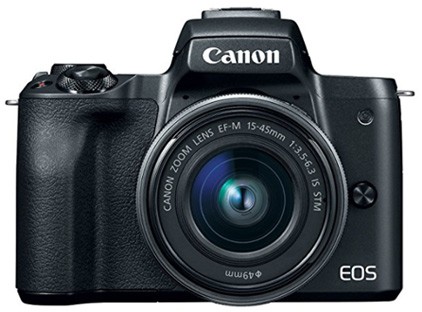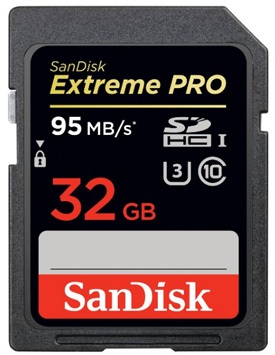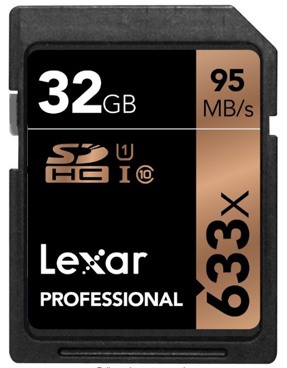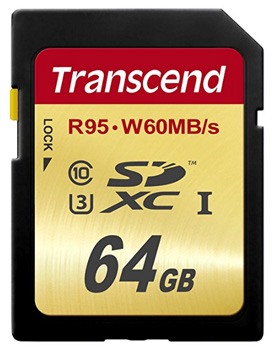In this guide, we’ve selected the 3 best memory cards for the Canon EOS M50.
The M50 is an advanced mirrorless camera with a 24MP sensor and 4K video capabilities. If you use your camera often, you need a reliable memory card that can quickly store whatever it is that you’re doing; recording long videos or shooting in burst and taking 7 pictures per second. This is quite intensive, but the memory cards we selected will easily handle the job.
Speed Class of SD Cards
| Class | Speed | Our opinion |
| Class 4 | 4MB/s | Too slow for most modern cameras. Skip it. |
| Class 6 | 6MB/s | A little bit better but unless you take 3 pictures a year, skip it. |
| Class 10 | 10MB/s | Good enough for most cameras with 20+ megapixels and Full HD video. |
| U1 (UHS-I) | 10MB/s | Good enough for most cameras with 20+ megapixels and Full HD video |
| U3 (UHS-I) | 30MB/s | Perfect for fast burst cameras, Full HD at 60fps and 4K video |
The Canon EOS M50 has 1 x SD memory card slot that supports UHS-I cards. These are the most popular type of cards and also very inexpensive.
Looking at the table above, you’ll want to get a UHS-I with a rating of at least U1 (10MB/s minimum speed). U3 would be the best, and it’s really just a few dollars more. If you’re going to record Full HD at 120p or 4K videos, you should get a U3 card.
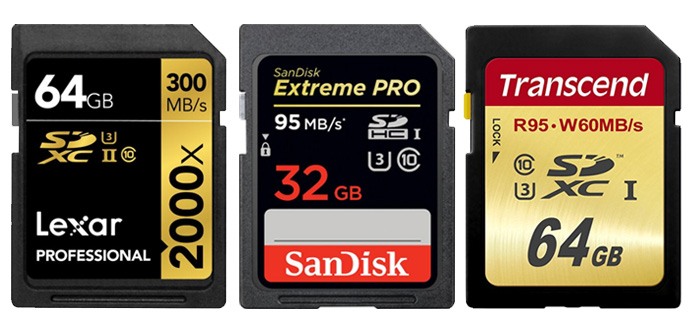
These are the best 3 SDHC/SDXC memory cards you can get:
- SanDisk Extreme Pro 95MB/s UHS-I U3
- Lexar Professional 95MB/s UHS-I U3
- Transcend R95/W60MB/s UHS-I U3
What to Remember about Memory Cards
Here are a couple key things to remember when purchasing a SD memory card.
- ALWAYS buy more than one SD card
- Memory cards don’t last forever
- If you run out of space in the middle of shooting you have another card to pop in
- Have two to four cards so you can setup a rotation between what’s in your camera and what you’re loading to your computer.
- Card size isn’t as important as buying more than one card
- Card capacity is nice but having a backup card(s) is much more valuable for real life
- If you must, skip a meal rather than buy a cheap SD card
- A bad memory card is going to slow down the ability to use your camera to its fullest
- The card failing unexpectedly can also have dire consequences
SanDisk Extreme Pro 95MB/s UHS-I U3
The SanDisk Extreme Pro 64GB U3 is our favorite card, seeing as it’s inexpensive and provides writing and reading speeds near 90MB/s. It’s a card we recommend for almost every camera that costs under $2000, because of it’s great price to performance ratio. You get one of these and it’s yours for years.
The speed makes it perfect for whatever you’re doing; fast bursts with large megapixel cameras, 4K video, let alone Full HD. It comes in 16GB, 32GB, 64GB, 128GB and 256GB sizes. It’s the ideal choice for the Canon M50.
You can buy it at Amazon or see more reviews here.
Lexar Professional 95MB/s UHS-I U3
The Lexar Professional 32GB U3 95MB/s is cheaper than the model above, and reaches the same reading speed yet falls a bit short in the writing department. While the minimum for U3 cards is always 30MB/s, this Lexar series reaches around 60MB/s.
It won’t be as fast as the Sandisk above (even though it’s fast), but it is still more than enough for the X100F. However, since memory card prices fluctuate a lot, if the Sandisk above is cheaper then definitely go for it.
Lexar also gives you the code to download their Imaging Rescue software. It comes in 16GB, 32GB, 64GB and 128GB sizes.
You can buy it at Amazon or see more reviews here.
Transcend R95/W60MB/s UHS-I U3
The most affordable on our list, yet still UHS-I U3, is the Transcend 64GB UHS-I U3. In terms of reading speed it goes up to 95MB/s, while for writing the maximum is 60MB/s just like Lexar above.
Transcend also gives you the option of downloading their free image recovery program and they both work pretty good in most cases. It comes in 64GB, 128GB and 256GB sizes.
You can buy it at Amazon or see more reviews here.
Comparison of the 3 Memory Cards
| Card | Size | Speed |
| Sandisk Extreme Pro 95MB/s U3 | 64GB | Writing files: ~90MBs. Reading files: ~95MB/s |
| Lexar Professional 95MB/s U3 | 64GB | Writing files: ~60MB/s. Reading files: ~90MB/s |
| Transcend R95/W60MB/s U3 | 64GB | Writing files: ~60MB/s. Reading files: ~90MB/s |
What Brands are the Best?
Your photographs and videos are stored on a memory card, so you should definitely not try to save any money here by buying from unknown, cheap brands. While you save a few bucks, you probably won’t even get the advertised speeds, and are at a bigger risk of losing your shots.
We see too many beginners choosing the cheap route here, but until you transfer your shots to a computer/online, this is where they’re stored at. You want the memory card to be the most reliable piece of your equipment!
Stick to Sandisk, Lexar, Transcend, Kingston, Sony and Toshiba. There may be a few other good brands out there, but the ones we mentioned are already more than enough and offer great prices.
Last Updated on September 14, 2021 by Nick Voorhees
First and foremost, I’m a husband and father. Then professionally I’m photographer, designer, blogger, and Esty store owner. My homebase is near the stunning Wasatch mountains in Utah but I love traveling with my family as part of our homeschooling journey. I also love teaching and helping out others. My faith is one of the biggest aspects of my life and brings be a consistent joy that I haven’t found in anything else. My main blog is BestPhotographyGear.com and I strive to make photography simple for anyone looking to learn or find gear for their individual needs. By nature, I like to study, research, and analyze things and I use that help provide the best advice and reviews I can.

